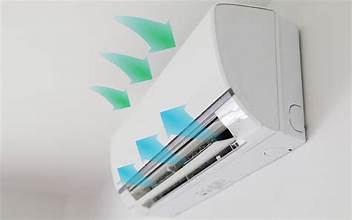Introduction:
Air conditioning systems are ubiquitous in modern buildings, providing comfort and climate control by regulating indoor temperature and humidity levels. One common question that arises regarding air conditioning systems is does ac pull air from outside. In this article, we will delve into the intricacies of air conditioning systems to understand how they operate and whether they draw air from the external environment. By gaining insight into the mechanisms of air conditioning, we can clarify misconceptions and better appreciate the role of these systems in maintaining indoor comfort.
Understanding the Basics of Air Conditioning:
To comprehend whether an air conditioning system pulls air from outside, it’s essential to understand the fundamental principles of how these systems work.
Cooling Process: Air conditioning systems use a refrigeration cycle to remove heat from indoor air, resulting in cooler temperatures. This process involves the circulation of a refrigerant that absorbs heat from the indoor air and releases it outside.
Air Circulation: Air conditioning systems circulate air within a closed loop, comprising intake, conditioning, and distribution phases. The system pulls air from within the building, conditions it, and then distributes it back into the indoor space.
Types of Air Conditioning Systems:
Air conditioning systems can be broadly classified into two main types based on their air intake mechanisms:
Recirculating Systems: Most residential and commercial air conditioning systems operate on a recirculating basis, meaning they recirculate indoor air without pulling air from outside. These systems rely on return air vents to collect indoor air, which is then cooled or heated before being distributed back into the building.
Ventilation Systems: Some specialized air conditioning systems incorporate ventilation components that allow for the intake of outside air. These systems typically include air handlers or ventilation units that draw air from the external environment, condition it, and then distribute it along with recirculated indoor air.
Role of Ventilation in Air Conditioning:
While many air conditioning systems primarily recirculate indoor air, ventilation plays a crucial role in maintaining indoor air quality and promoting freshness.
Ventilation Units: Air conditioning systems equipped with ventilation units can pull air from outside when necessary to replenish indoor air supply. This process helps dilute indoor pollutants and odors and introduces fresh air into the building.
Energy Efficiency Considerations: Ventilation systems that pull air from outside may impact energy efficiency, as conditioning outside air requires additional energy consumption. To mitigate energy losses, some systems incorporate energy recovery ventilation (ERV) or heat recovery ventilation (HRV) technology, which preconditions incoming air using heat exchange mechanisms.
Indoor Air Quality Considerations:
The quality of indoor air is a crucial factor in maintaining occupant health and well-being. While recirculating air conditioning systems primarily rely on indoor air, proper filtration and ventilation measures are essential for promoting indoor air quality.
Filtration: Air conditioning systems are equipped with filters that trap airborne contaminants such as dust, pollen, and allergens, preventing them from circulating within the building. Regular filter maintenance is necessary to ensure optimal filtration efficiency and indoor air quality.
Ventilation Strategies: Incorporating ventilation components in air conditioning systems allows for the introduction of fresh air from outside, reducing the buildup of indoor pollutants and enhancing indoor air quality. Proper ventilation design and control are essential for balancing energy efficiency with indoor air quality objectives.
Conclusion:
In conclusion, while some air conditioning systems incorporate ventilation components that allow for the intake of outside air, the majority of systems primarily recirculate indoor air. Understanding the mechanisms of air conditioning systems and the role of ventilation in maintaining indoor air quality is essential for optimizing comfort, energy efficiency, and occupant health. Whether pulling air from outside or recirculating indoor air, air conditioning systems play a vital role in creating a comfortable and healthy indoor environment.



